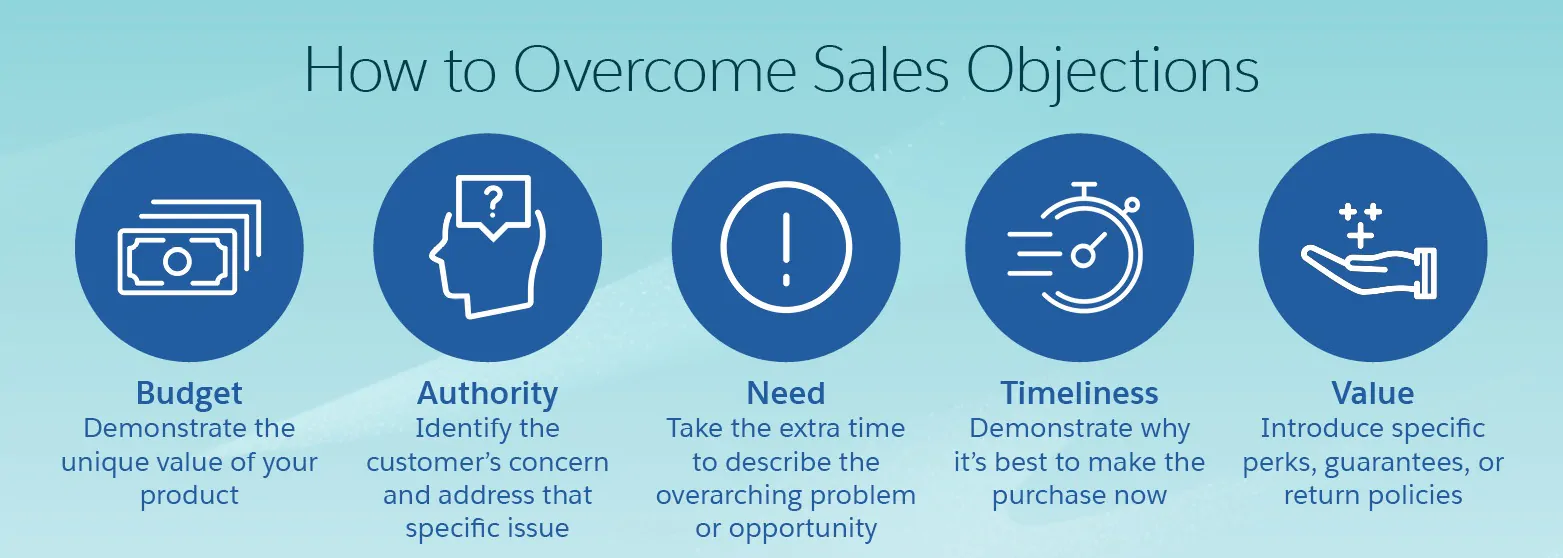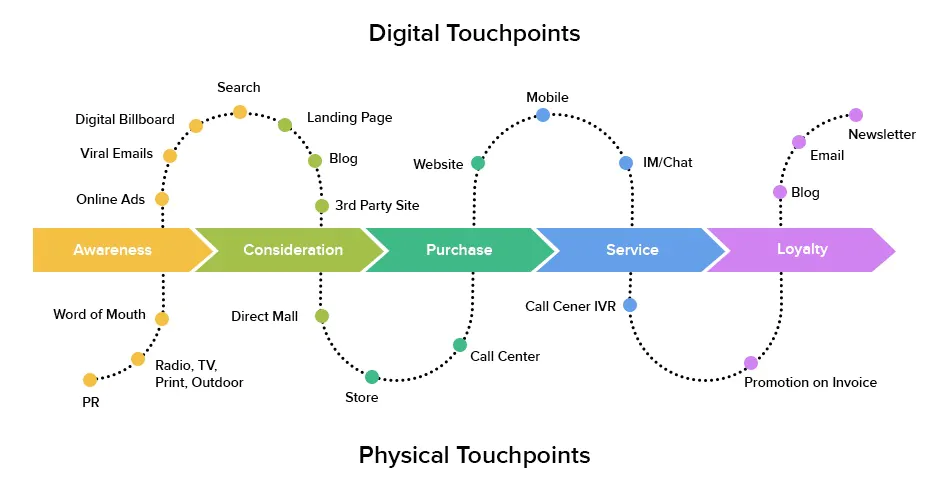Revenue. The mother of all sales metrics.
The C-suite – and consequently, the whole sales team – is often so focused on revenue that the path to get there is often forgotten.
On the other hand, sometimes Marketing is so focused on lead generation that the sales organization becomes overwhelmed with unqualified leads that don’t convert, leaving everyone wondering why.
This means you need to go into the nitty-gritty of your lead management process if you truly want to avoid leaving revenue on the table. First, try to answer each of these questions:
- Do you know the average number of times your sales reps contact each lead before they convert?
- Are your sales and marketing efforts aligned to ensure a consistent brand experience across the marketing and sales funnels?
- What is your cost per acquisition (CPA) per customer?
- Can you, with reasonable confidence, attribute a specific dollar value to a particular marketing campaign or sales initiative? What is your ROAS (Return on Ad Spend) for each channel?
- What is your customer satisfaction level (Net Promoter Score)?
If you hesitated in answering any of these questions, you might need to hit refresh on your lead nurturing process.
Key Takeaways:
- Lead nurturing is nothing but breaking down obstacles one by one and creating a favorable perception of your product in the leads’ eyes.
- Delivering the right messaging again and again at multiple touchpoints is key to gaining mindshare in your leads.
- Keep leads invested in your brand journey by inducing micro-conversions.
Lead Nurturing 101: The What and the Why
In the simplest terms, lead nurturing is the process of systematic engagement and relationship management that takes your leads closer to conversion. The process accelerates once a sales rep establishes personal contact with a lead. The benefits of allocating more resources to your lead nurturing efforts include
- A bigger market: 80% of leads never convert. With proper lead nurturing, you can turn these odds in your favor.
- Lower Customer Acquisition Cost (CAC): Businesses that invest rigorously in lead nurturing capabilities generate 50% more sales-ready leads for 33% lesser costs than companies that don’t.
- Competitive advantage: Only about 35% of marketers have an established lead nurturing plan. This means that just by having a lead nurturing strategy, you’re ahead of two-thirds of the pack.
- Bigger Average Order Value (AOV): Nurtured leads tend to purchase items worth 47% more than non-nurtured leads. Assuming incremental revenue is significantly greater than nurturing costs, your asset utilization grows manifold.
- Top-down visibility of the sales funnel: Fruitful engagement with leads means you can route customer feedback into your processes at a faster rate. Consequently, you have more clarity in executing strategic and tactical maneuvers and optimizing resource allocation for each stage of the funnel.
While organizations rarely find a single lead nurturing strategy that accelerates sales across the board, there are several best practices that are effective for all lead segments. You can use a combination of these over a period of time and see which ones serve your target audience well.
1. Educate Your Leads; Solve Their Problems
Marketers often confuse the message with the medium. That’s why stats that promise results with email, social media, or search are so misleading. These are mere channels for communication. Identify a fundamental problem your audience has, design a solution to address it, and then package it for one of these media.
Focus on developing a knowledge base that can virtually answer most of your leads’ objections during the conversion cycle. Such objections can revolve around pricing, alternatives, delivery, quality, and other key variables.
Source: Salesforce
After you have classified the key objections, focus on the impact. For instance, a benefits calculator or a comparison sheet might help a price-sensitive lead determine your offering’s value proposition. Or, a case study of a company from the same industry as your lead might put key decision-makers minds at rest.
Mix and match content types such as blog posts, case studies, video testimonials, infographics, etc. Test and scale channels such as email, social media, and TV.
Craft your message to ensure it fits the lead category (and score!), and then choose the channel preferred by your lead. Do not confuse the channel for the message!
2. (Re)Target Them Better
Your marketing team has already laid the broad-stroke groundwork to understand your target audience. And by engaging with your brand at least once, most of these leads can be organized in segments and cohorts – they have already provided specific contact details, demographic data, and even product preferences. You are sitting on an underutilized treasure trove. And all you need is the right platform where you can aggregate this information and nudge these leads towards the next conversion phase.
Remarketing ads on Google and Facebook allow you to focus on the granular details, ensuring you are not throwing everything at the wall to see what sticks. You can create lists of people who’ve engaged with your business in a specific way and then show messaging that’s more likely to convert them.
Once your team has mastered the art of retargeting, you can use automation platforms to make it all the more systematic.
3. Allocate Leads Instead of Distributing Them
Lead routing is the process of assigning a lead to a sales rep. Sounds simple? It is simple when you have a few dozen leads and a handful of sales reps. But, what if you have a national sales team and thousands of leads to be handed over daily?
Most such businesses have an additional factor that makes things all the more challenging: multiple locations. Unsurprisingly, they revert to the default setting – hand over the leads to the local dealer or franchise and then wait for the conversions to get reported. That is an availability-based allocation, and while it is not horrible, it is sub-optimal.
When you resort to territory-based or round-robin routing, you are throwing away the edge you can have because you understand the lead’s location, preferences, and special needs along with its value to the business. Plus, your system is optimized for convenience, not conversion.
Instead, you need a lead routing system that takes into account:
- Lead Scores: Lead scoring is a method of taking inputs like net realizable revenues, the conversion stage the lead is at, and other key factors that help you determine the most valuable leads. Usually, an automated system that can provide a quantified score based on manually input data can be the right fit for a medium or large-scale enterprise operation.
- Geographic Data: This is pretty straightforward – just use the lead’s location as one of the critical inputs in the lead routing system. Pay attention to the fact that the focus is not on the sales territory for the local distributor but the location of the lead.
- Applied Specialization: Some leads might be in a tough spot. For instance, let’s say a clinic is looking to buy its first CT scanner but doesn’t have a budget and is considering purchasing a used one. Such situations might require the touch of a specialist or a technical sales rep. Your lead routing system should take into account the uniqueness of each case and choose the ideal rep based on their skills, training, and previous dealings so that you’re able to provide a customized or personalized solution to every lead.
By structuring your lead routing workflow, you remove the guesswork from the process and instead focus on effective lead allocation.
4. Can’t Convert? Try CANT
Sometimes, if leads come under pressure to make the buying decision early in the sales lifecycle, it might trigger them to keep their guard up and consequently delay the purchase. Add a purchase committee to it, and you have an exponentially bigger fiasco in your hands.
An intuitive workaround for this problem is to focus on an easy framework: CANT or Convert Audience to Next Touchpoint.
Understanding CANT is easy – ask your sales reps to sell the hole, not the shovel. That might just as well mean selling the test drive, not the car. Or a 30-day free trial, not the software. Doing this lowers the perceived stakes of engaging with your brand for prospects while buying time and opportunity for your reps to build a relationship without having to address high-stake objections immediately.
Source: Clicademy
In marketing parlance, these small steps are termed micro conversions. You might be appalled at the idea of giving out free trials or test drives to leads that you aren’t sure will ever convert. However, if your marketing team has done an excellent job qualifying the leads, you won’t have to worry about this problem. The leads that convert will more than pay for those that go cold.
5 Bonus Quick-Fire Tips
Here are some fundamentals you need to stick to if you want the best results from your lead nurturing strategy:
- Respond as quickly as possible (with the same consistency) to every lead over a minimum score threshold.
- Ensure your sales reps are incentivized to nurture and convert leads.
- Provide a consistent brand experience with consistent voice and tone of messaging, logos, layouts, fonts, and other communication elements at every touchpoint along the customer journey.
- Use the marketing and communication channels your leads are most comfortable with, not the ones your sales team prefers.
- Every piece of communication or messaging must have a CTA that directs the lead to take a specific action.
The Secret Sauce of Conversions
Yes, there is more. We know lead nurturing is a long, drawn-out process, and implementing the perfect strategy takes years of practice and experience. And this is one of the key reasons why we developed MXTR Automation. Our users have reported:
- 15% rise in sales productivity
- 12% decline in marketing overheads
- Significant increase in the number of leads managed
Our platform achieves this by:
- Routing leads over your network and automating your lead nurturing process across multi-location touchpoints with an omnichannel approach
- Delivering comprehensive visibility over every touchpoint from lead generation to conversion
- Providing a unified platform for lead nurturing and conversion optimization with capabilities to conceptualize, execute, and scale campaigns
Do you want to ensure no leads leak out of your sales funnel? Do you want to give control of strategic lead nurturing to your best sales reps? Click here for a demo of what autonomous, intelligent lead nurturing looks like at scale.
Featured image: Pexels







